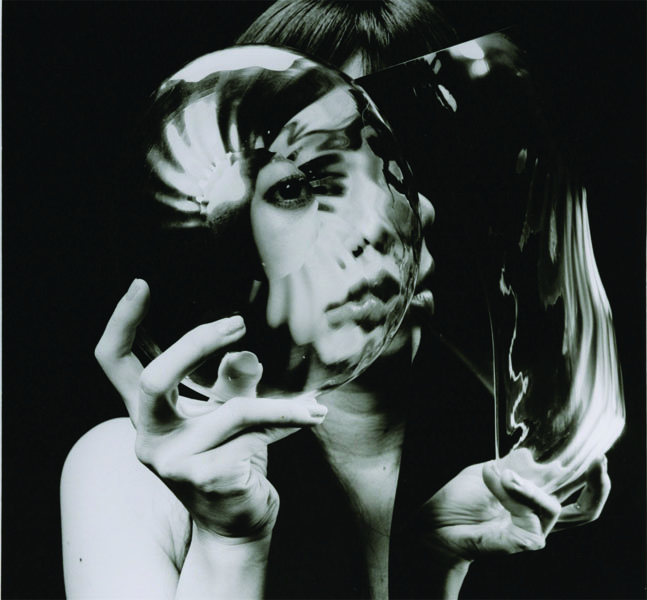Shows
Tetsuro Sato’s “Hengao”


A culmination of a ten-year investigation into lenticular manipulation, Japanese photographer Tetsuro Sato presents, in his first New York exhibition, a selection of recent photo-portraits. Influenced by and rebelling against the Japanese phenomenon of the purikura—photo-sticker booths that beautify sitters using cutesy photographic manipulation such as blemish-erasing washouts and eye enlargement—Sato creates his own series of hengao (“funny/strange faces”).
Instead of digital alterations, however, Sato distorts the models’ images through the use of glassware and mirrors. In Hanako 01 (2010), the woman wedges her face between two metal sheets creating the illusion of innumerable masks peeling away from her unnaturally tapered head. In Sakie 04 (2010), a mirror exaggerates the figure’s pronounced cheekbones and broad jawline until the woman’s face is shaped like a crescent moon. Holding a glass bowl and a reflective sheet to her face, the model’s profile in Sakie 02 (2010) fans into the rippled grooves of the bowl, while one eye unaltered stares somberly at Sato’s camera.
The serious expressions of the models within the austere black-and-white photographs balance the works’ playful subject matter. While its funhouse associations risk introducing an element of farce, the clean and straightforward compositions derived from fashion-model posturing and studio-lighting techniques—Sato photographed each work in his commercial studio Sugar1—impart a sense of sobriety, and invite viewers to look past the strangeness of his work and appreciate its alien beauty.

Sato cites 1960s and 70s Japanese portrait photography as a source of inspiration. In particular, the “Hengao” series seems to share a common spirit with the simple “Asakusa Portraits” (1973) by that era’s famed portraitist Hiroh Kikai. Kikai photographed individual strangers in front of a wall in Tokyo’s Sensō-ji temple and had them look directly at the camera. In “Hengao,” Sato follows the same arrangement, but instead of Sensō-ji, fashion models stand before a black backdrop. However, Sato departs from the straight photographic aesthetic by employing lens distortions as an expressive device, instead of conventional variations in tonal values.
“Hengao” may best be described as a new form of deconstructivist photography, in which the subtle distortion of images that occurs within the camera has informed the composition of the photo itself. In this way, the materiality of the photographic medium is visibly intelligible within these photo-portraits, revealing a “truth to materials,” a quality that has generally been reserved for traditional tactile mediums. In light of the profusion of illusory digital imaging that has come to dominate contemporary art photography, Sato deserves accolade for successfully restoring the art photographer’s relationship with his medium.







